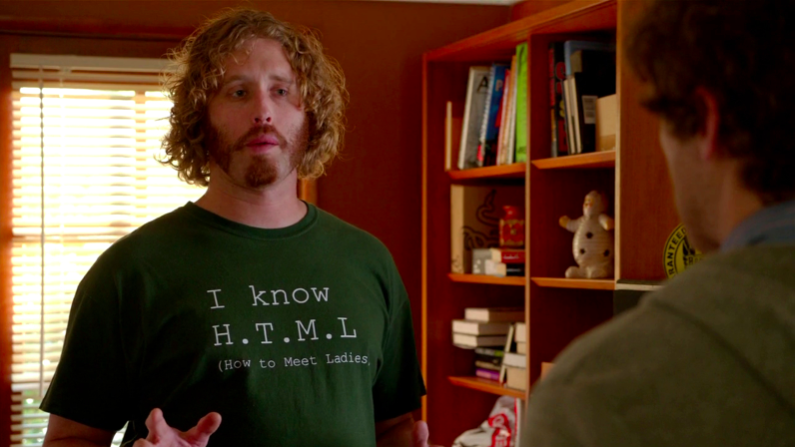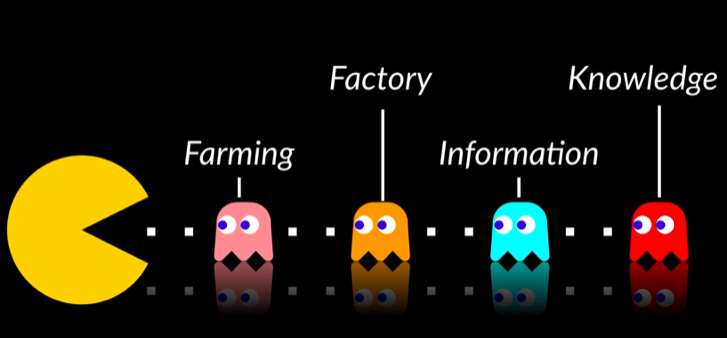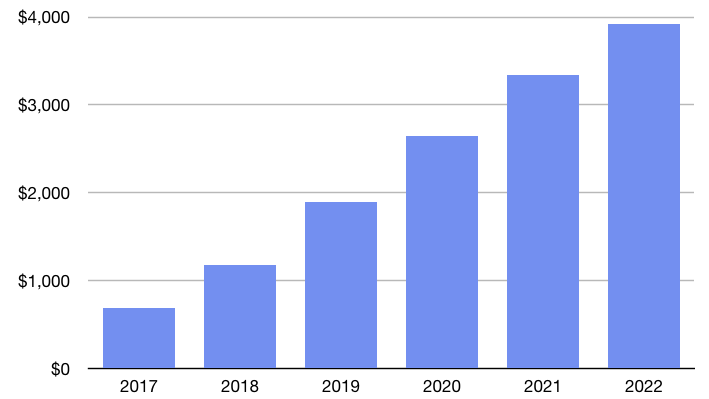Market Snapshot
| Indices | Week | YTD |
|---|
This past weekend, 165 million Americans shopped during the Black Friday weekend. While Black Friday lost some appeal as less shoppers turned out to physical stores, Cyber Monday was hot with a record $7.9 billion spent by consumers — up 28% when compared to 2017. Not surprising, more shoppers were shopping on mobile devices. $2.1 billion of sales came from smartphones and two of the most used online shopping platforms were Amazon and Walmart.
In fact, Cyber Monday 2018 was Amazon’s largest shopping day in history based on the number of products sold worldwide, eclipsing the records set by Black Friday and Amazon’s own Prime Day, which sold over 100 million products. Shopper turn out was strong over the “Turkey 5” — what Amazon dubs as the five shopping days from Thanksgiving to Cyber Monday, with 180 million products sold this year.
This year’s Turkey 5 only underscores the dramatic change in retail over the past decade.

Amazon was launched in 1994 — the same year Marc Andreessen co-founded Netscape, effectively creating the Internet as we know it. Amazon started as a novel way to order books and it helped retailers like Target fulfill their fledgling online orders. At the time, Sears, once the most largest retailer in the world, had a $16 billion market value.
Today, Sears is worth $1 billion and it recently filed for bankruptcy. Amazon is now worth over $800 billion. But it wasn’t just Sears that got steamrolled because it failed to capitalize on the digital tracks laid by companies like Netscape, and later Apple and Google.

As department stores hemorrhage market value, jobs are departing. In fact, retailers like Macy’s, Nordstrom, and JCPenney have shed over 100,000 jobs since October 2016.
To put that in perspective, that’s more than the total number of coal miners employed in the United States.
The good news is that the e-commerce sector has created 355,000 new jobs since 2007. But the bad news is that these new jobs are quickly being automated. Amazon already “employs” over 45,000 robots in its warehouses today. Chinese manufacturers, once famous for cheap labor, purchase over 90,000 industrial robots per year, a number that is projected to exceed 175,000 by 2020. All in all, there are over 350 million global manufacturing and warehouse workers whose jobs are vulnerable to automation.
Amazon’s digital assistant Alexa is a preview of what’s next. The company recently announced that Alexa now has over 50,000 distinct “skills” in her toolkit — up from 1,000 in June 2016. Soon, all jobs will be in play.
THE END OF HISTORY VS. THE FUTURE OF WORK
Throughout history, whether in pre-industrial or industrial times, great nations developed based on their access to physical resources or their ability to surmount physical barriers. England and Spain crossed oceans, Germany turned coal and iron into steel, and the United States exploited a wealth of agricultural and industrial resources to become the World’s breadbasket and industrial superpower.
But the advent of the personal computer, the Internet, and the digital delivery of information shifted the World’s focus from physical capital to human capital. The most valuable resources in a physical economy are commodities like coal, iron, and oil. Their value is judged by metrics like purity and volume. In a knowledge economy, the most valuable resource is talent. Talent is valued based on brainpower, and the ability to acquire, deliver, and process information effectively.

The Service Economy that developed after World War II started to shift education requirements. If you wanted to participate in the service industry — in jobs ranging from accounting to retail sales to entertainment — some formal education was required. Brains started to win out over brawn.
Gaining knowledge was worthwhile; these jobs were safer, less strenuous, and often better paid. Nevertheless, the education demands were still fairly low: in 1950, roughly 20% of the rising U.S. workforce had some college education by age 30, and only 20% of jobs required a postsecondary credential.
The Personal Computer revolution that began in the mid-1970s displaced a wide range of manual labor, administrative, and clerical jobs — many that were lucrative and desirable. The World changed again when Netscape debuted on Wall Street in 1995. Broad Internet connectivity transformed communication, making an individual’s actual workplace less relevant.
Now, U.S. workers faced competition not only from computers, but also from low-cost talent pools thousands of miles away. One click and you were connected to your service representative in Mumbai. In developed countries, knowledge work became the new area of opportunity.

Today there is a prevailing sense that rapidly accelerating digitization and automation is triggering an economic shift unlike any we have seen before. As MIT scholars Erik Brynjolfsson and Andrew McAfee observe in The Second Machine Age, an unsettling future is taking shape characterized by massive unemployment and economic disruption stemming from the fact that as computers get more powerful, companies will have less need for workers of any kind.
Oxford researchers have projected that 47% of American jobs are at “high risk” of being automated in the next 20 years. McKinsey estimates that 12 million U.S. “middle skill” jobs will be eliminated by 2025. A White House economic report predicted that 83% of jobs that pay less than $20 an hour will be eliminated by automation.

Through the automation eliminating traditional jobs, Bank of America Merrill Lynch predicts that there will be a $9 trillion reduction in employment costs. Additionally, AI technologies could reduce $8 trillion of costs in the manufacturing and healthcare industry and creating $2 trillion of efficiency gains through autonomous vehicles and drones. All in all, the annual disruptive impact of AI technologies could amount to up to $33 trillion.
What does that all amount to? According to the McKinsey Global Institute, The AI revolution is transforming society 10x faster, at 300x the scale, and approximately 3000x the impact of the Industrial Revolution.
White collar jobs of all types are are up against major challenges. By 2025 it’s estimated that $7 trillion will be managed by robo-financial advisors by 2025. The Associated Press is already using Artificial Intelligence to produce over 3,000 financial reports per quarter. Effectively, robots are managing money and reporting financial results.
For many, it feels like technology jobs are an Alamo.
It’s why Mark Zuckerberg said. “Our policy is to hire as many talented computer engineers as we can find. There aren’t enough people who have these skills today.” It’s why The U.S. Department of Labor projects there will be 1.2 Million one computer science related job openings by 2020. No less an authority than the Harvard Business Review called Data Science, “The sexiest job of the 21st century.”
The problem is that we are living in exponential times. The computer capability curve is getting steeper. Technology replaces the technologist. Automation is going from Blue Collar, to White Collar, to “No Collar”.

It’s why you’re hearing a chorus of people claim the the end of times are here. Nobel laureate Paul Krugman has speculated that, “We could be looking at a society in which all the gains in wealth accrue to whoever owns the robots.” Y-Combinator’s Sam Altman has suggested that, “The obvious conclusion is that the government will just have to give [unemployed] people money.”
Aside from the minor issue that the government doesn’t make money — it takes money — one thing we know as sure as the Sun comes up in the East is that automation eats jobs. But it doesn’t eat work. In 1787, Thomas Jefferson observed that, “Agriculture is our wisest pursuit, because it will in the end contribute most to real wealth, good morals, and happiness.” We know how that played out.

We don’t think that we’ve reached the end of history. We just need to think differently.
Imagine how farmers would have responded if you told them in 1790 that essentially all of the agricultural jobs were going to vanish in less than two hundred years — or, in other words, that the entire agrarian economic ecosystem was going up in smoke. Many would have lobbied the government to protect their livelihood. Others might have shrugged off the news, betting that it wouldn’t happen on their watch. But indignant, indifferent, or ignorant, change happens.
Kaizen is a Japanese business term meaning “continuous improvement.” An education corollary is GSV’s concept of “KaizenEDU,” which means “continuous learning.” In a world with smart machines, you can no longer fill up your “knowledge tank” until age 25 and cruise through life. Effective workers must refill their knowledge tanks continuously.
To prepare for an uncertain future, we suggest the 7C’s to augment reading, writing and arithmetic for what a knowledge worker needs to know: Critical Thinking, Creativity, Communication, Cultural Fluency, Civic Engagement, Collaboration and Character.
Those skills, in addition to “learning how to learn”, will be the foundation for participating in the future.
—
The GSV AcceleraTE team is thrilled to announce the inaugural episode of the GSV AcceleraTE Podcast at the leading edge of education and workforce innovation. We’ll be meeting with the most exciting names in education and talent technology on a regular basis to share our conversations with listeners.

This month, Coursera CEO Jeff Maggioncalda joined GSV partner Julia Stiglitz for a discussion on MOOCs, online degrees, and a look under the hood at Coursera as they push the limits of online education.
You can download and subscribe to the podcast on iTunes, Stitcher, or Spotify using the links below:




